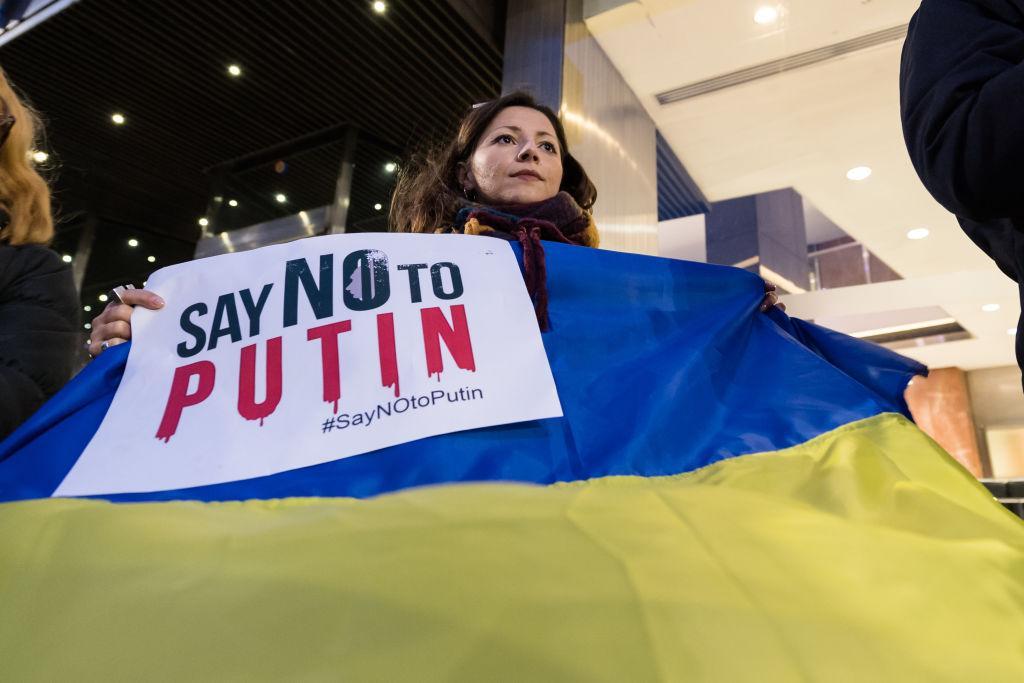LONDON: Oil paused for breath on Tuesday after breaking $91 earlier in the week, ahead of OPEC+ meeting and amid increased tensions over Ukraine.
Despite speculation that OPEC+ could upwardly revise its current output levels, most analysts believe the group will stick to its current strategy of adding 400,000 barrels a day to output in monthly increments, further incurring the wrath of US President Joe Biden by ignoring his calls to turn the taps on more.
The latest OPEC figures reveal the group increased production by just 210,000 bpd last month, just over half the 400,000 bpd increase the group is committed to producing.
Against the backdrop of the current tight market and OPEC+ continuing to lag behind its targets, many industry observers believe crude oil is rapidly heading towards $100, particularly if the Ukraine-Russia crisis worsens and US producers fail to ratchet up production.
Put simply, the market is concerned that OPEC+ would struggle to maintain an increase in production levels in the event that Russian premier Vladimir Putin decides to launch a military invasion of Ukraine, or a smaller incursion where he annexes more territory in the east of the country.
UBS oil analyst Giovanni Staunovo told Arab News: “In a severe scenario, and this is a risk case, not our base case, we assume that 10–20 percent of Russian oil production and exports are disrupted, lifting Brent prices to $125 or higher. The magnitude of the price reaction would depend on when the disruption occurs. OPEC+ still has some spare capacity, so the group could increase production and compensate for the disruption at this time. This buffer, however, is likely to diminish this summer, with only Saudi Arabia and the UAE having spare capacity.”
A conflict in Ukraine threatens the energy security of Europe because of its dependence on Russia to supply natural gas. According to the US Energy Information Administration (EIA) European OECD nations took in 48 percent of Russia’s crude and 72 percent of its natural gas exports.
Potential sanctions in the event Russia invaded Ukraine are unlikely to include oil and gas, but Putin could of course turn off the gas himself, as he has done periodically over the last year, if other western sanctions start to bite.
It’s worth nothing that Russia’s central bank is estimated to be sitting on US$600bn in reserves, more than enough to cope with a brief energy shock.
Meanwhile, other sanctions that could damage Russian trade, such as expelling it from the international Swift payments system have been effectively dismissed by German Foreign Minister Annalena Baerbock.
Germany of course relies on Russia for around a third of its gas and crude oil supplies.
But is it feasible that a dispute in eastern Europe could really trigger $100 oil in the coming months?
Staunovo said: “Calculating a risk premium is always tricky. Historically geopolitical risk premia didn’t last if there were no supply disruptions. Russian oil keeps flowing to the world at the moment.”
Staunovo added that much of the current spike in oil prices is largely attributable to production disruptions in Nigeria, Libya, and Ecuador in late December.
He said: “That resulted in ongoing oil inventory declines in January, when we normally have an oversupplied oil market in the first and second quarter of every year, and is the main reason Brent trades around $90.”
Meanwhile, something else OPEC+ may be pondering this week is the potential revival of the US shale industry.
The heyday of US shale may well be over, but no less an authority than Larry Fink, who at COP26 appeared was busy embracing all things green, wrote to investors in his annual letter that Blackrock “does not pursue divestment from oil and gas companies as a policy”, adding that companies in the sector “are a critical part of decarbonization”.
Against the backdrop of OPEC’s refusal to open up the pumps, President Biden has also signalled that the US fracking industry has a role to play in combatting spiralling petrol pump prices.
The EIA estimates that US oil and gas production was 11.7 million in November, and output in the Permian Basin, the country’s largest shale oil field, set a record in December. Estimates suggest shale production will increase sharply this year though remain below 2018 and 2019 levels.
But a shale revival could prove a mixed blessing, as Christyan Malek, JP Morgan’s head of oil and gas noted last month: “If US oil rig counts are up, OPEC will add barrels back into the market in April to cap shale productivity.”
That again begs the question of how long OPEC could maintain an increase in supply if required. Against the backdrop of increased environmental concerns and the wider shift in energy investment, one suspects OPEC is better placed to remain the swing producer than the US shale industry.










